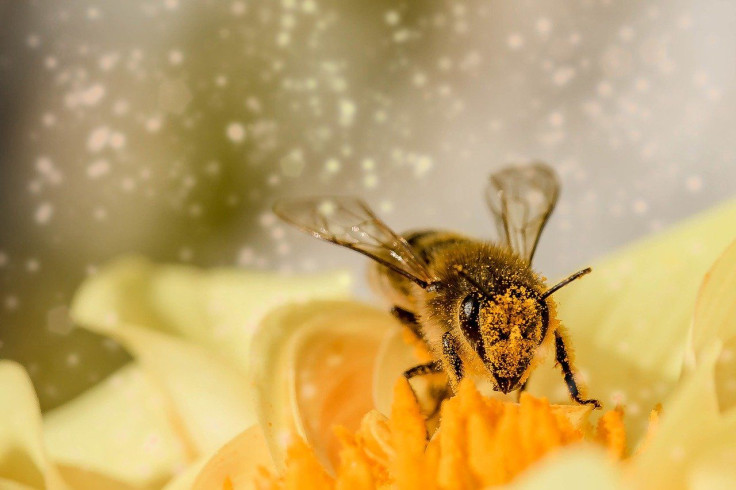Why The Sweetest Nectar Is Not Necessarily The Best For Bumblebees
KEY POINTS
- Animal pollinators help produce about a third of the world's crops
- Nectar high in sugar concentrations contain more energy
- Researchers suggest that high-sugar nectar may not be the best for bees
- High-sugar nectar is thicker and stickier, making it more difficult for bees to vomit
- Optimizing the type of flowers can boost crop pollination
Bumblebees drink nectar from flowers then carry it back to the nest where they regurgitate the nectar for other members of the colony to use. More sugar in the nectar means it contains more energy. However, a new study, published in the Journal of the Royal Society Interface, found that higher sugar in nectar is not necessarily the best option for bumblebees.
Vomiting Bumblebees
For the study, researchers let Bombus Terrestris bees forage on three sugar solutions with different sugar concentrations. The solution with more sugar is more appealing to the bees, but it is also thicker and stickier. Once the bees had returned to their nest in the laboratory, the researchers timed how long it took for the bees to vomit the nectar they collected.
It only took the bees a few seconds to vomit the low strength nectar so they were able to quickly go back out again to forage more. However, it was more difficult for the bees to regurgitate the thicker solution with high sugar concentration. In fact, first author Dr. Jonathan Pattrick even noted that it, sometimes, took the bees nearly a minute to completely vomit the thick nectar.
Simply put, the nectar with higher sugar concentration is more attractive and contains more energy. However, it is not necessarily the best for bumblebees because it is also more difficult to drink and vomit because it is much thicker.
“It's hard to drink a thick, sticky liquid, but imagine trying to spit it out again through a straw — that would be even harder,” Pattrick said. “At a certain sugar concentration, the energy gain versus energy loss is optimized for nectar feeders.”
Optimal Sugar Concentration
While it is already known that thicker nectar takes longer to drink, its effect on regurgitation does not get much attention. As such, the results could help crop breeders determine which flowers would be most appealing to bees for better crop pollination.
This, of course, also depends on the bee species. For instance, honeybees feed by dipping their tongues on the nectar and regurgitate by forcing the nectar back up a tube. On the other hand, other species suck nectar up, so thicker concentrations would definitely be more difficult to drink.
As such, it is also important to take the bee species into account when thinking of the best nectar concentration for high energy intake and faster processing.
“Bumblebees must strike a balance between choosing nectar that is energy-rich but isn't too time-consuming to drink and offload. Nectar sugar concentration affects the speed of the bees' foraging trips, so it influences their foraging decisions,” Pattrick said.
So far, crop breeding is focused on giving them traits such as disease resistance. Given the results, pollinator preferences could also be taken into account so as to maximize bee pollination.

© Copyright IBTimes 2024. All rights reserved.












